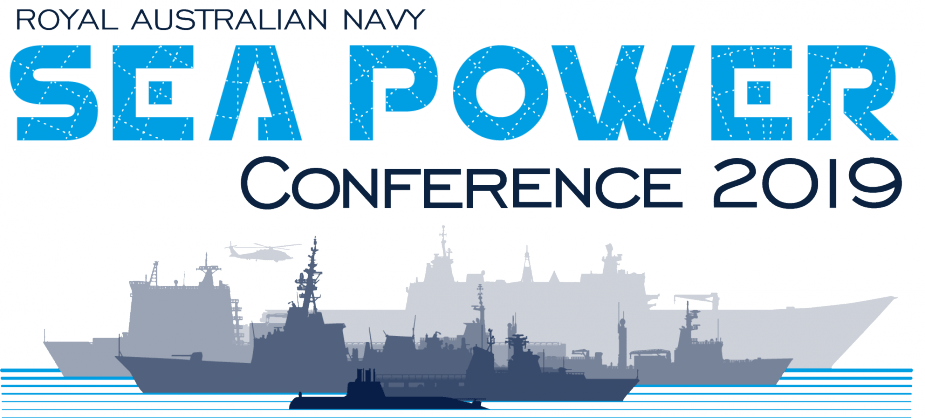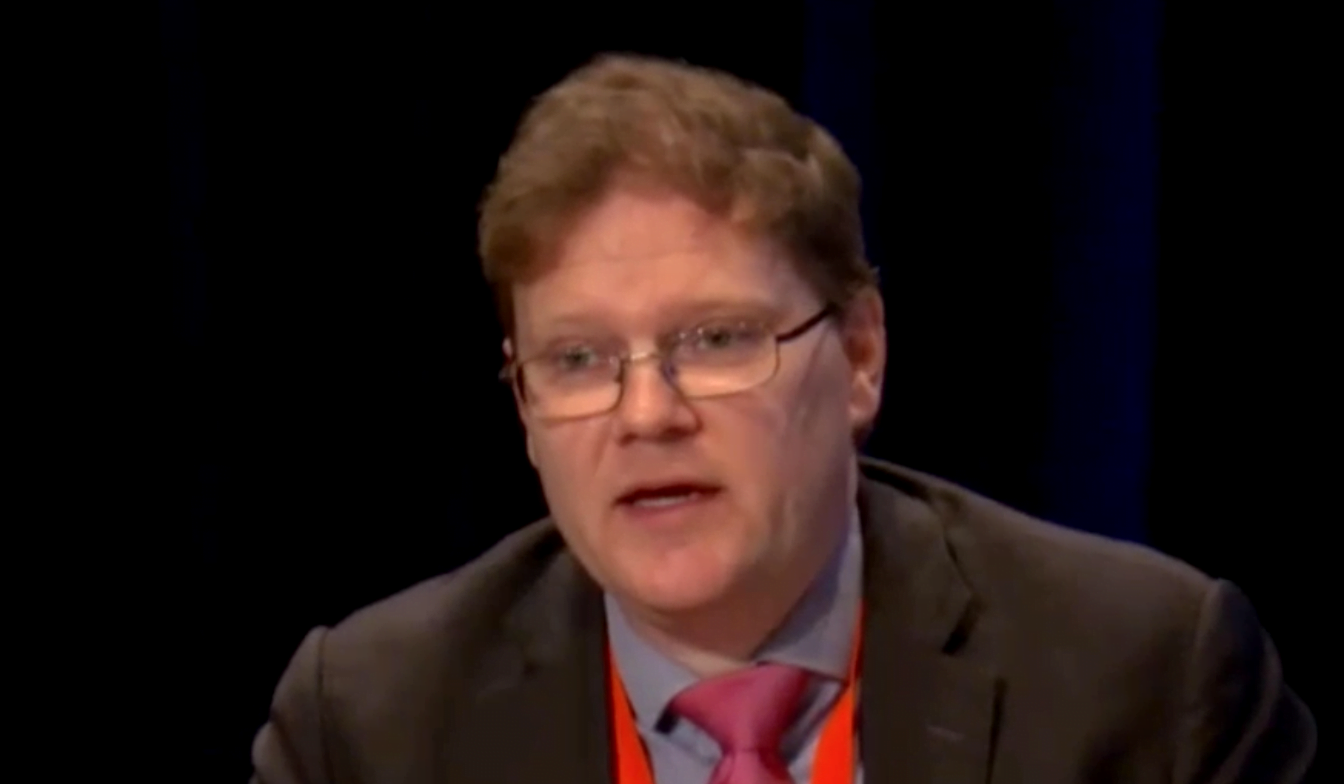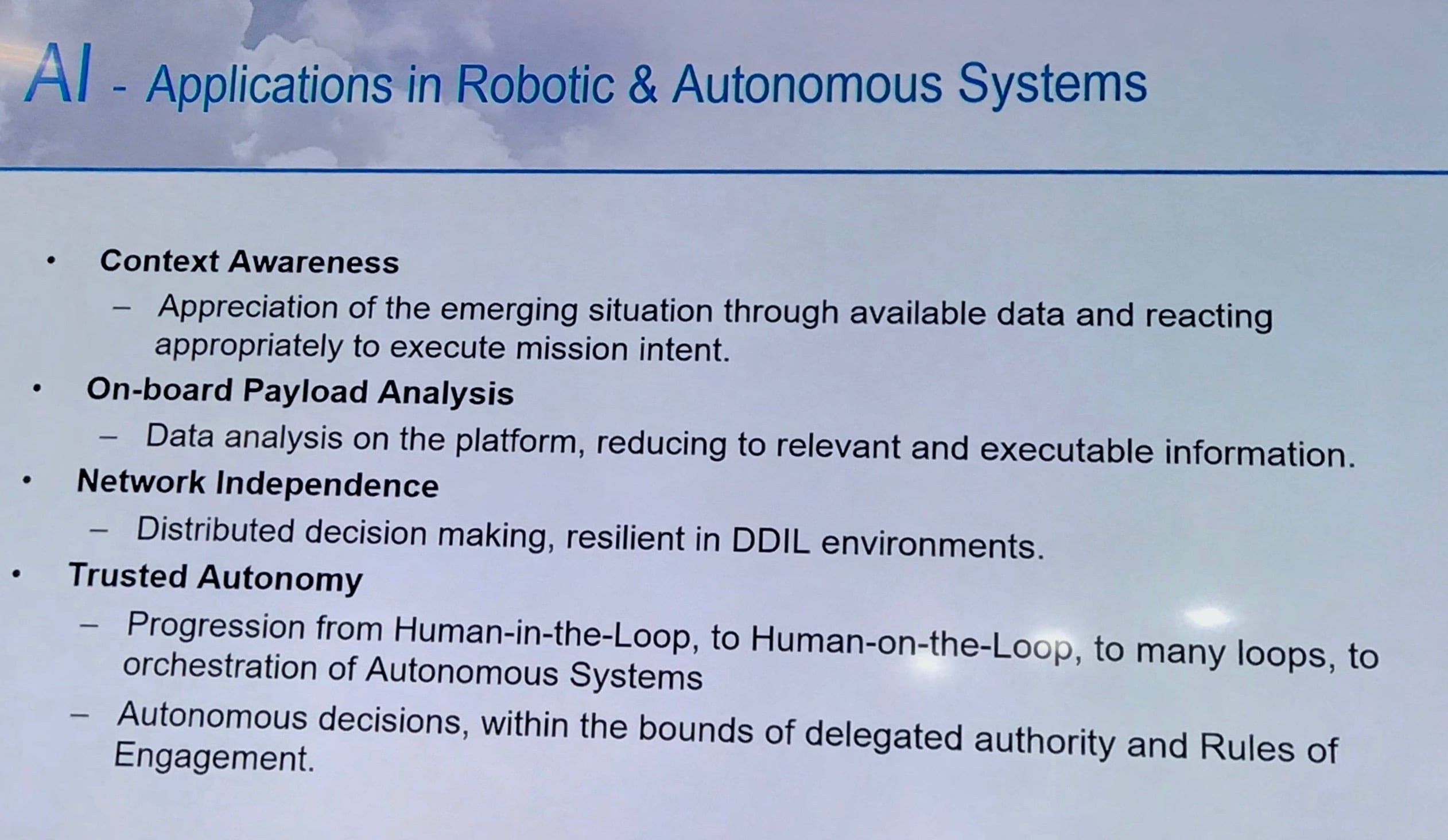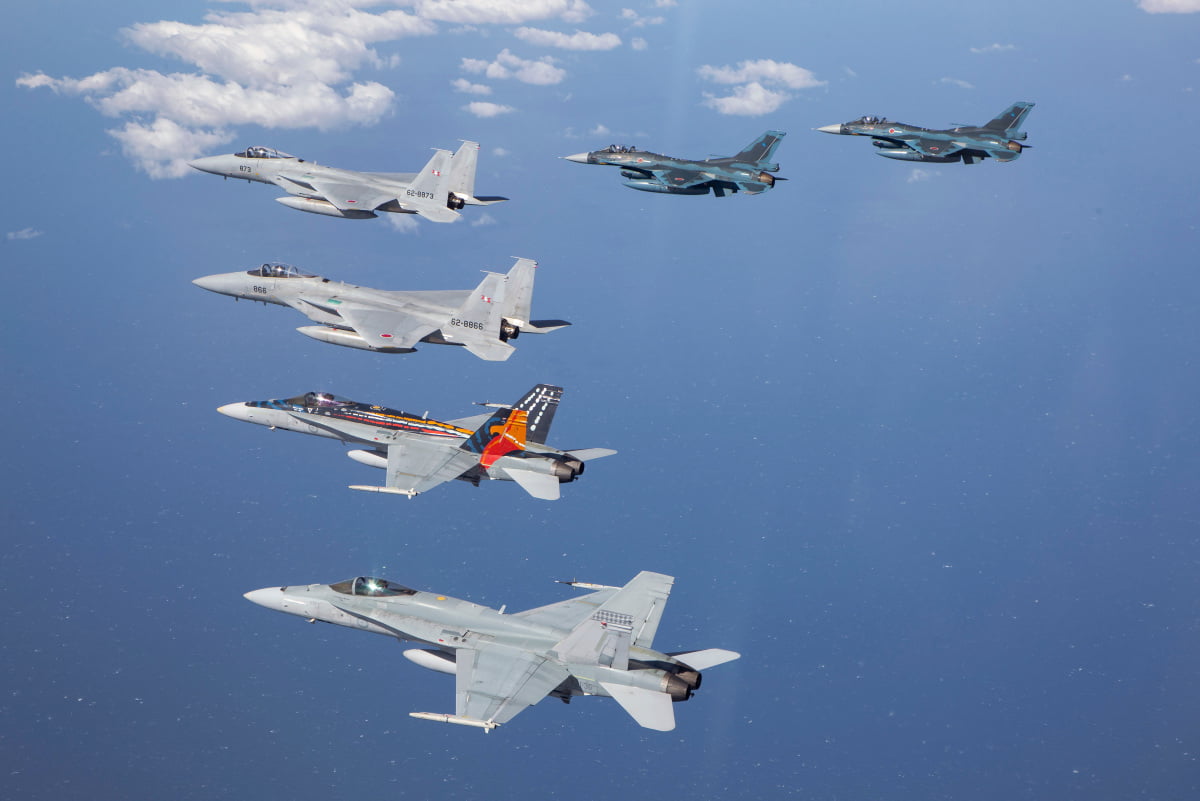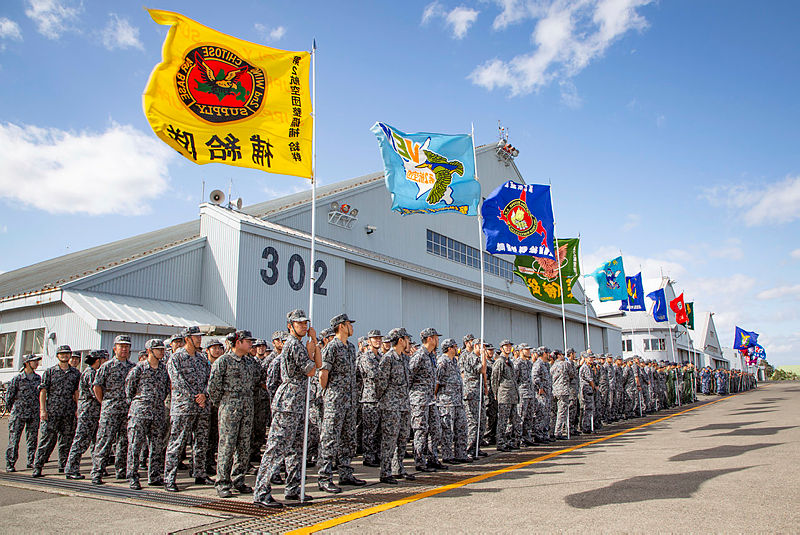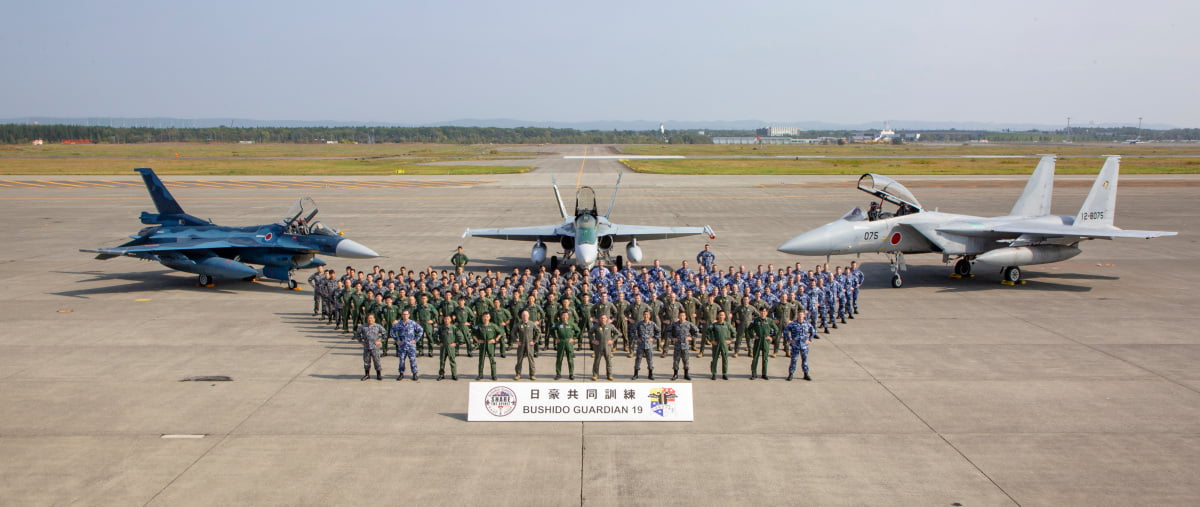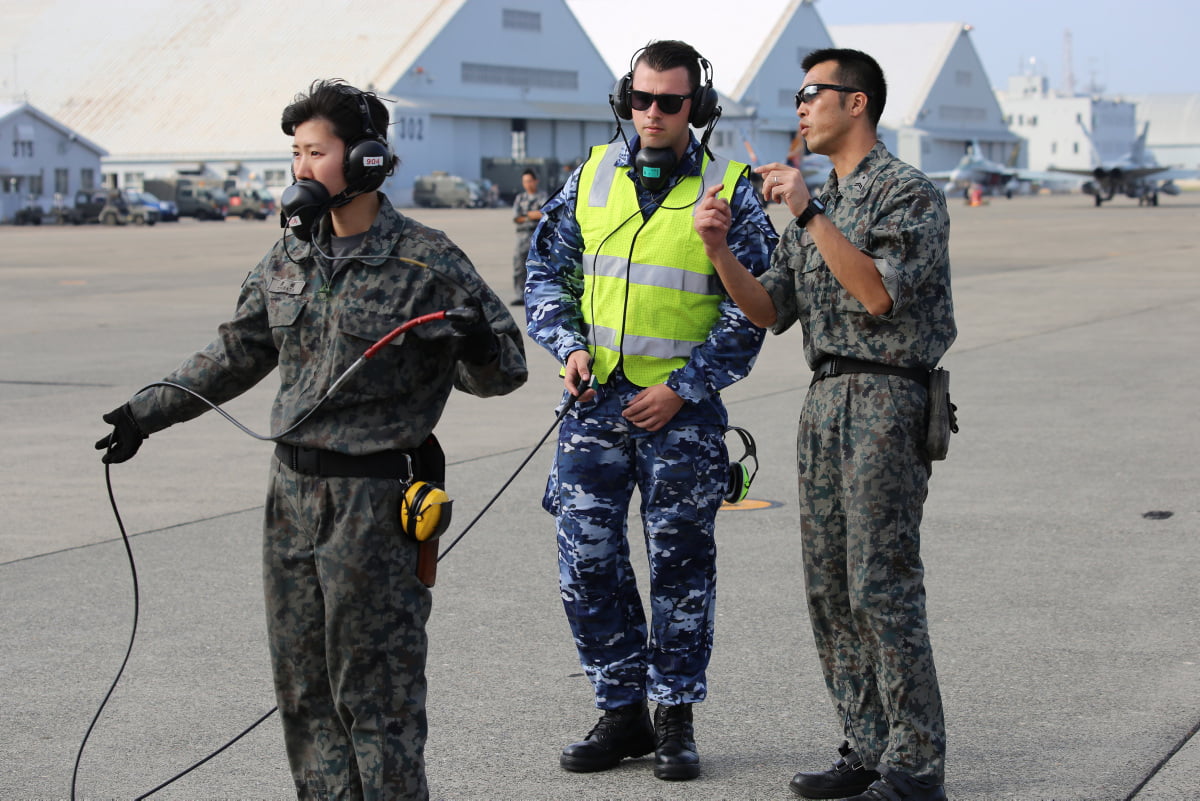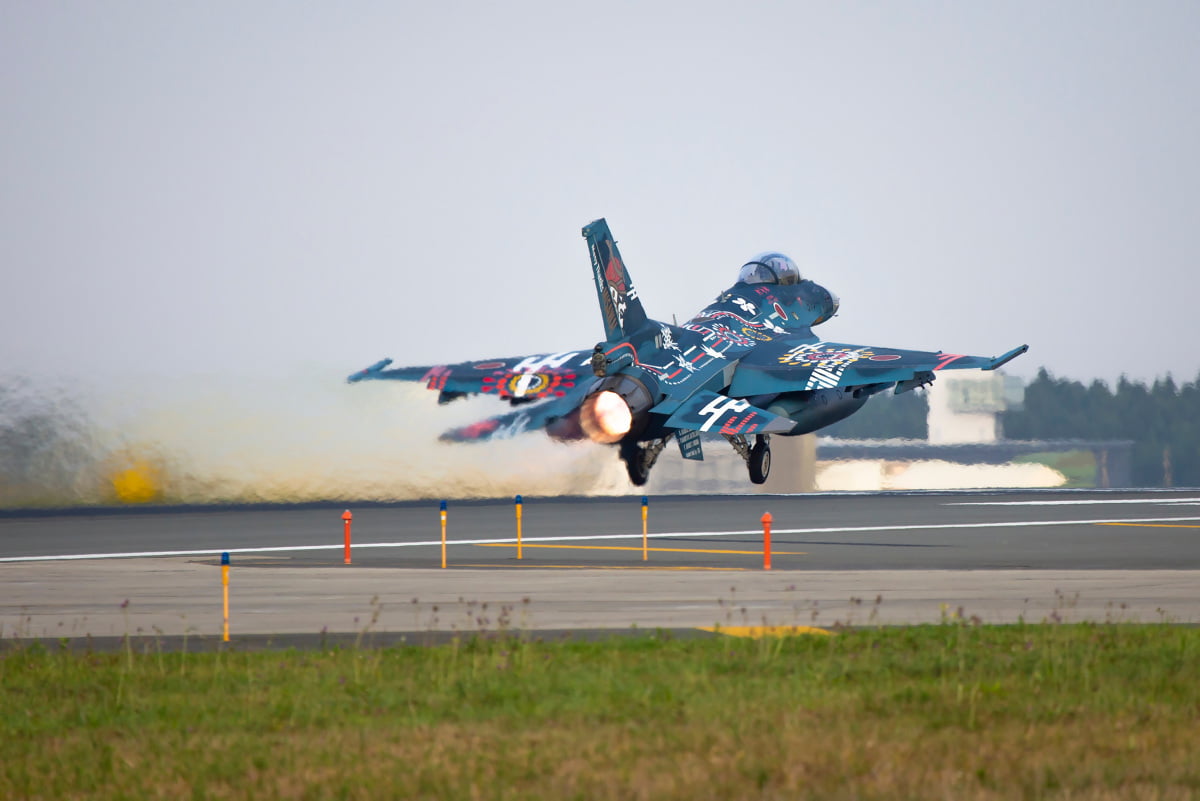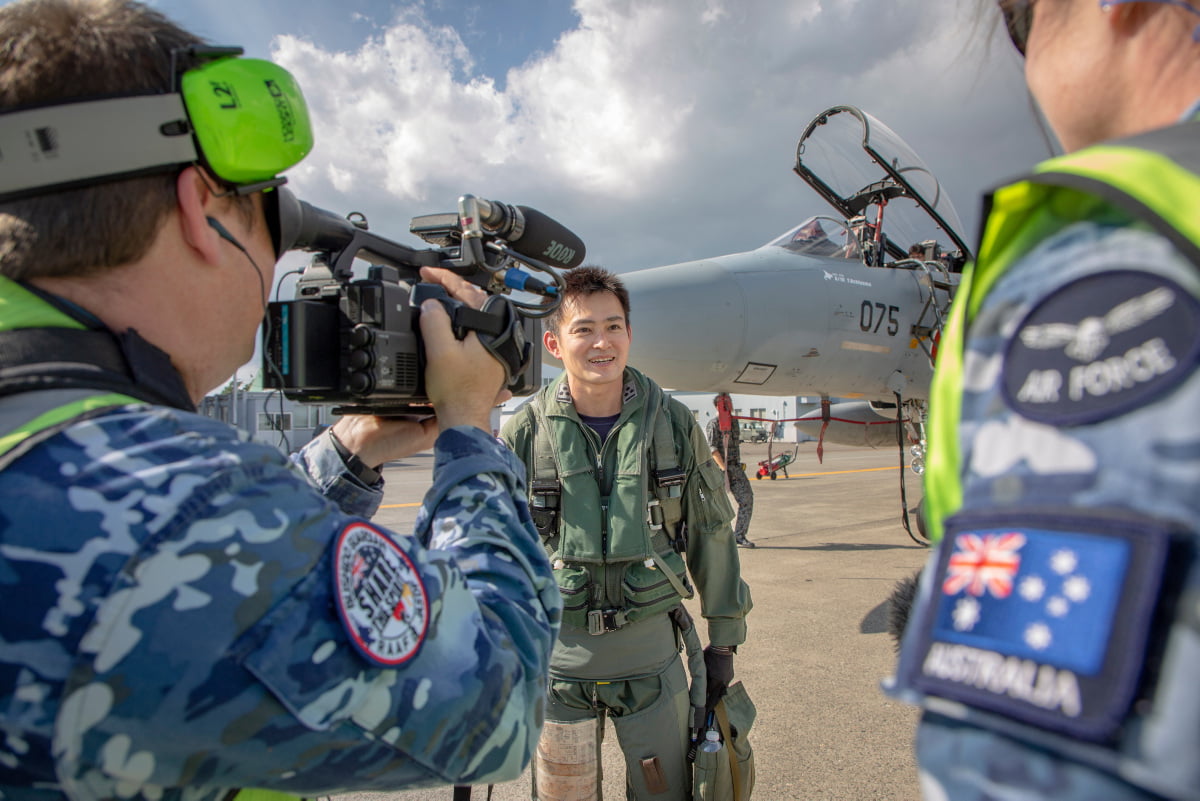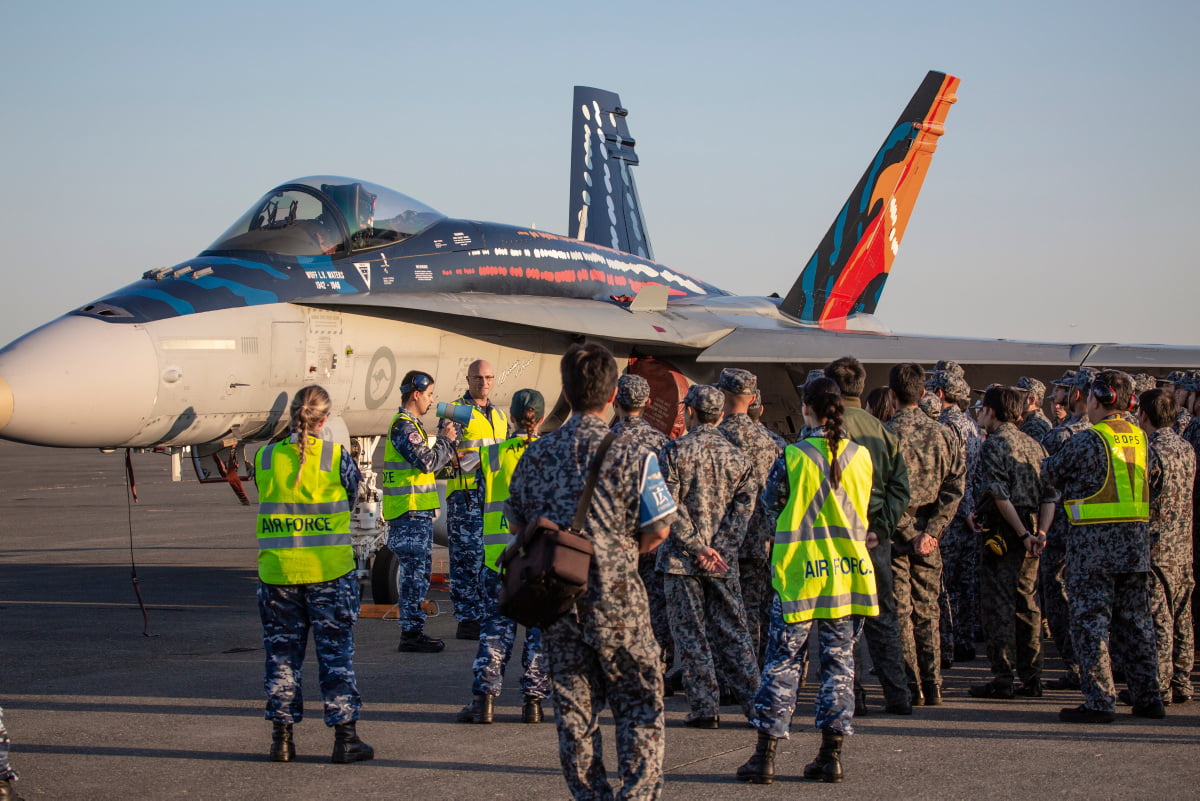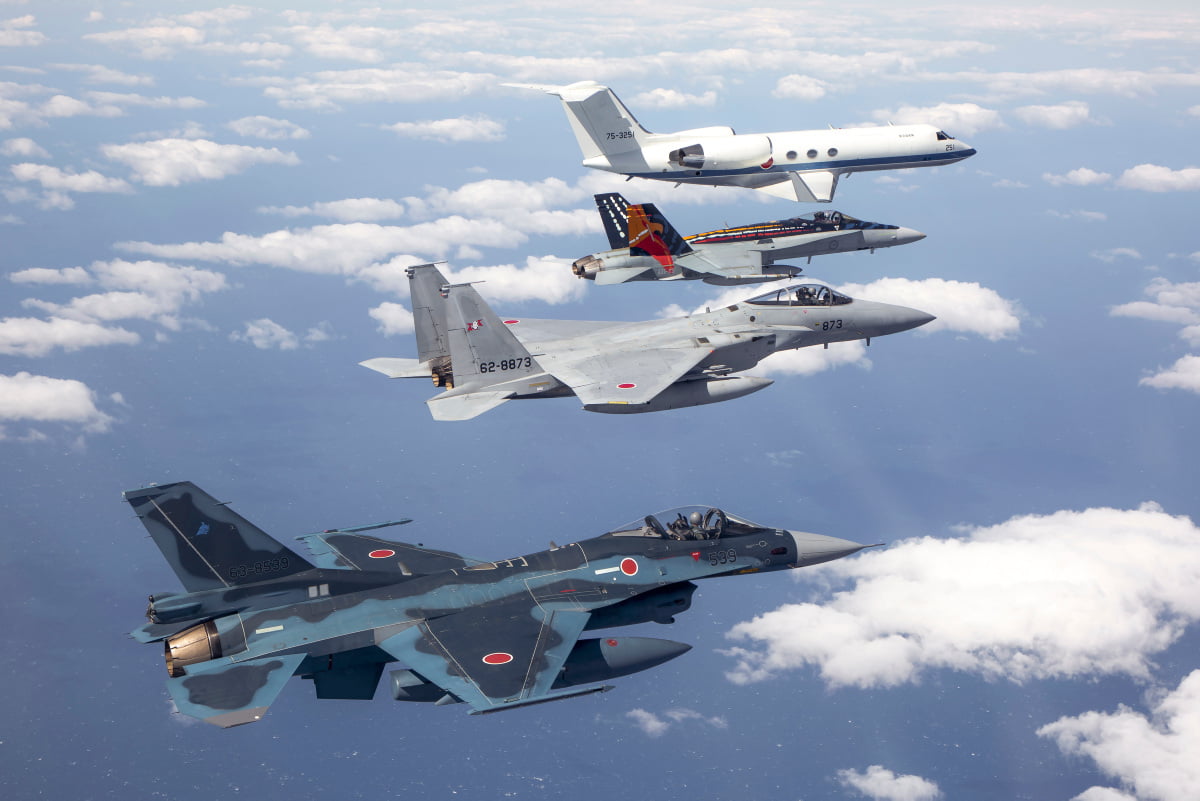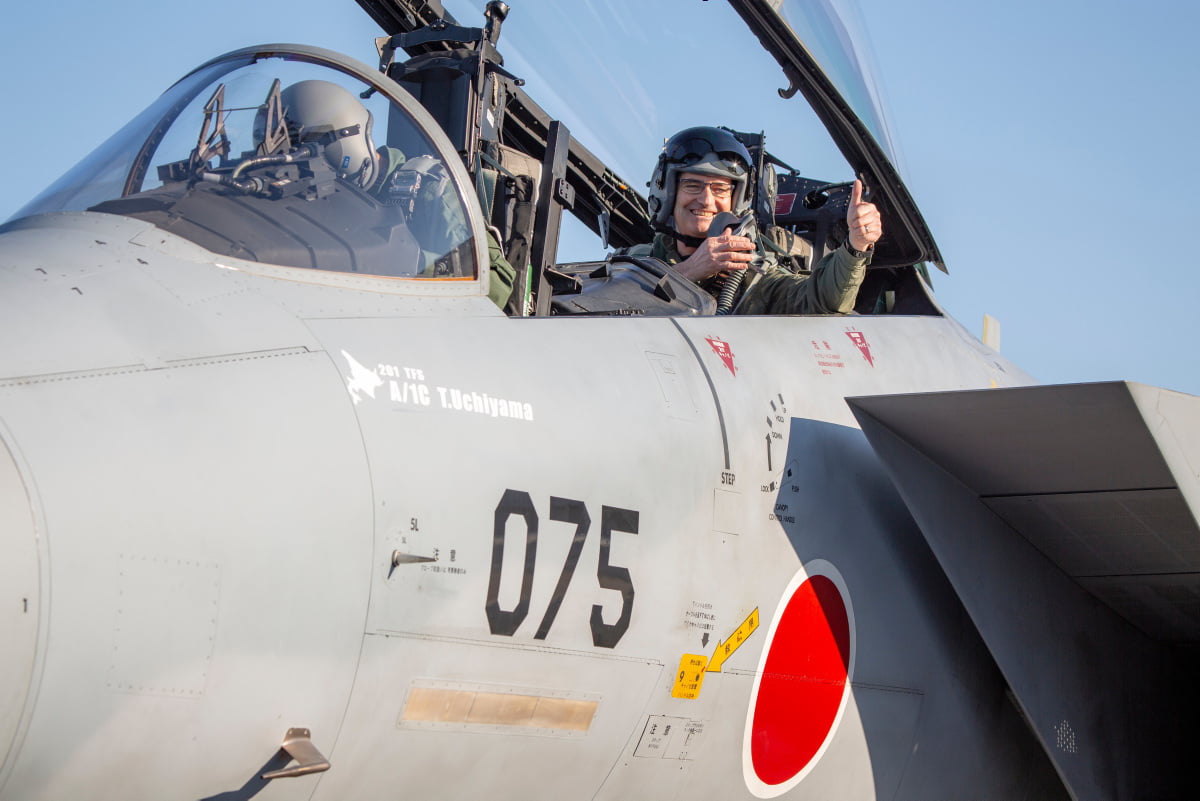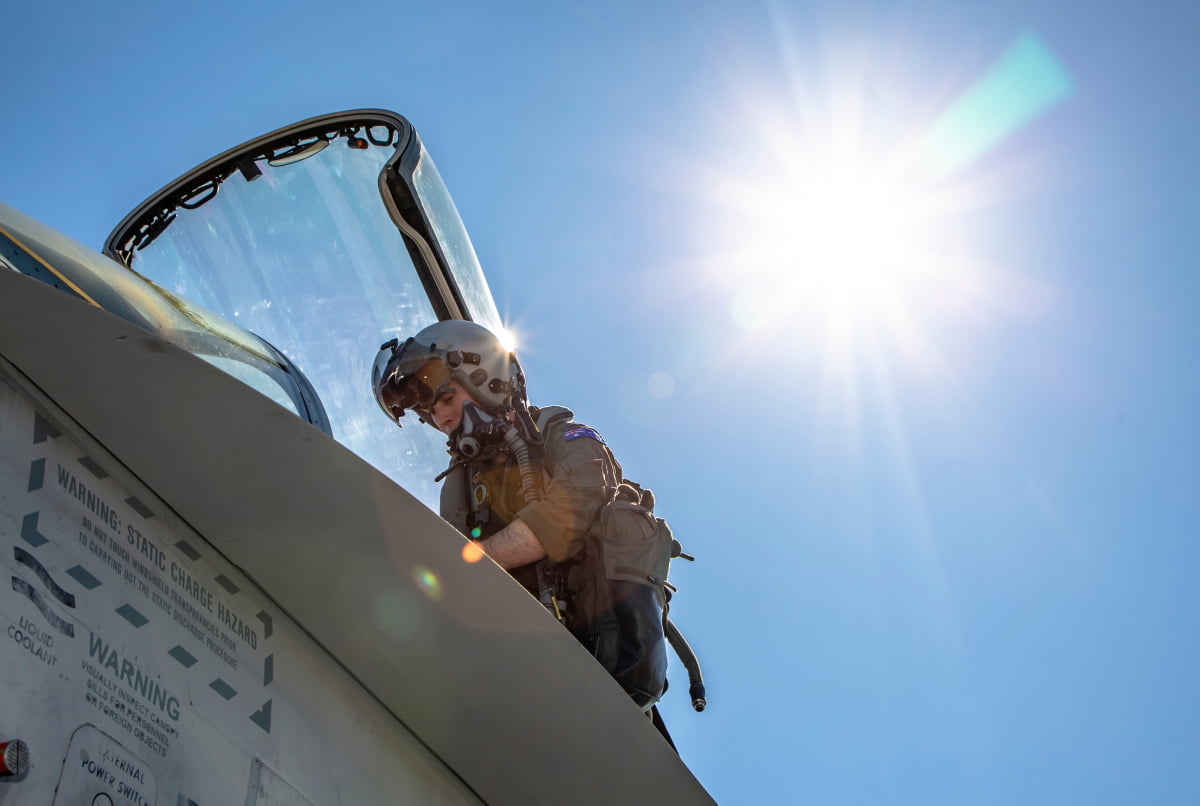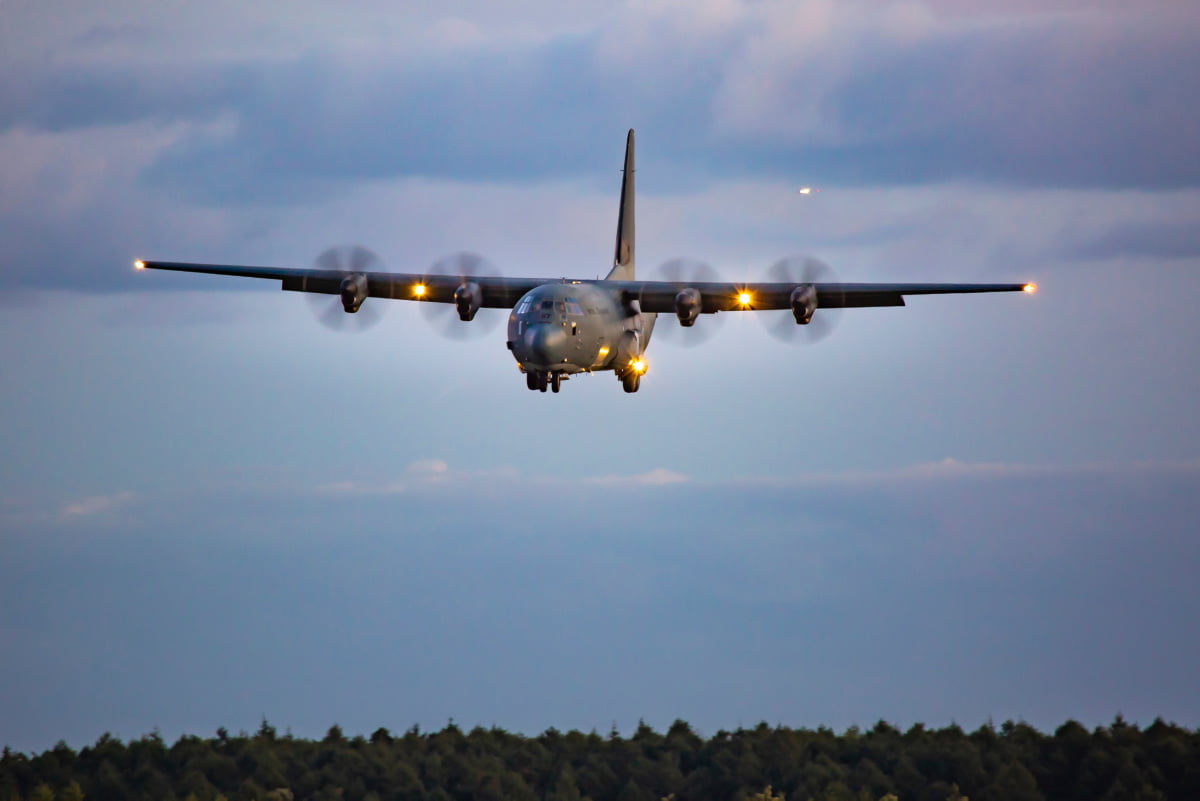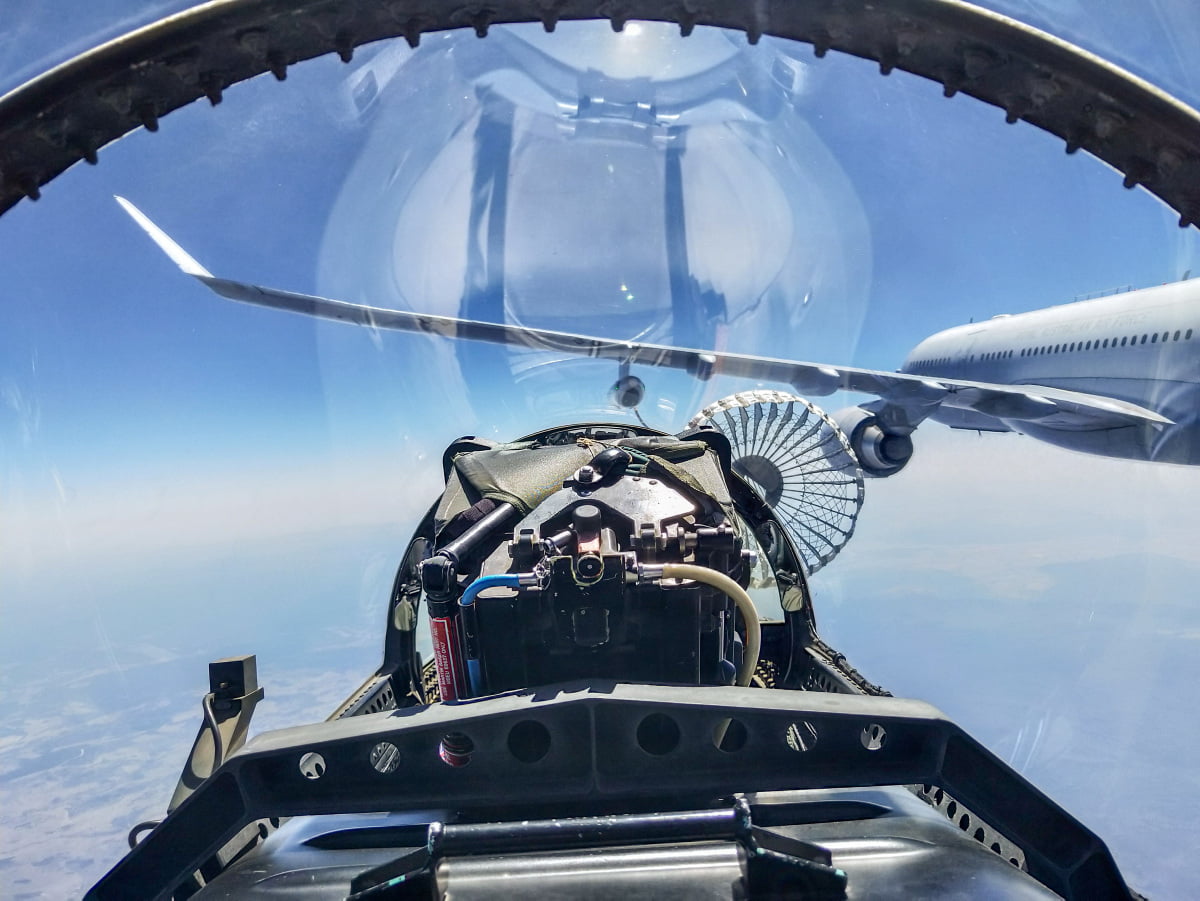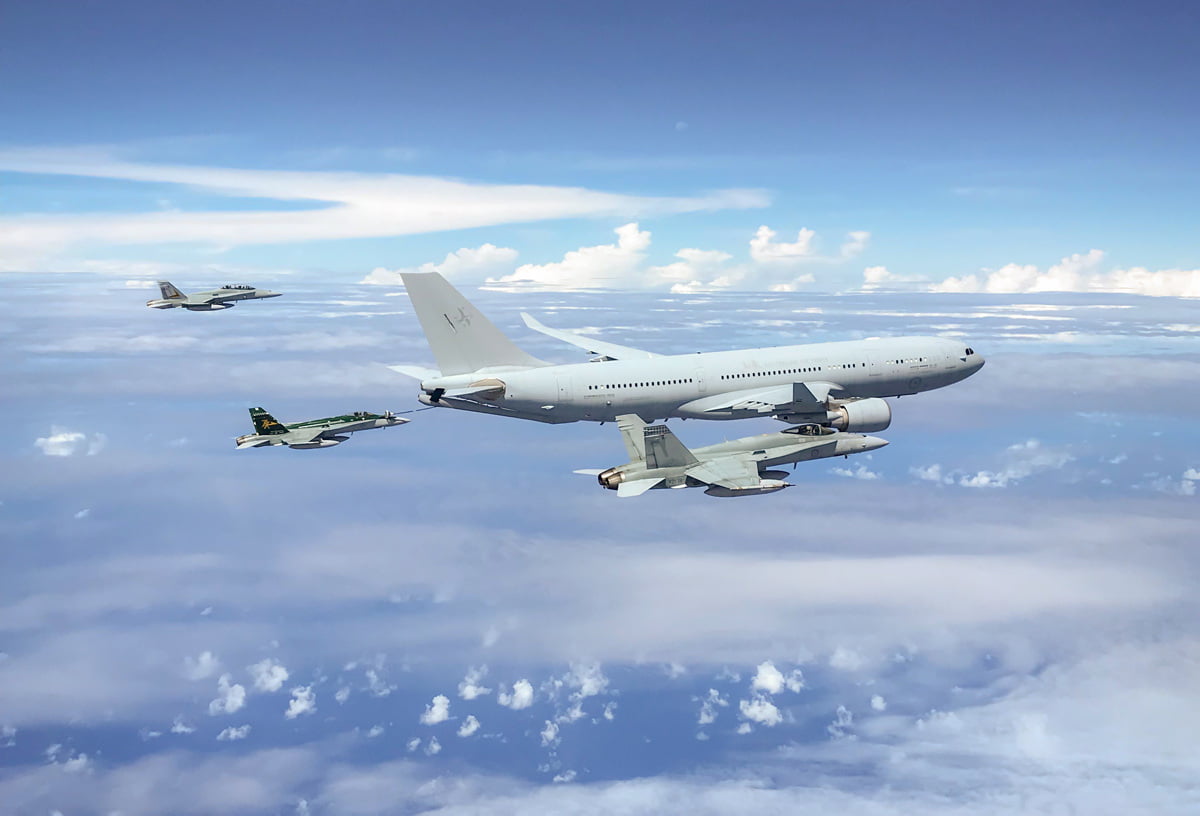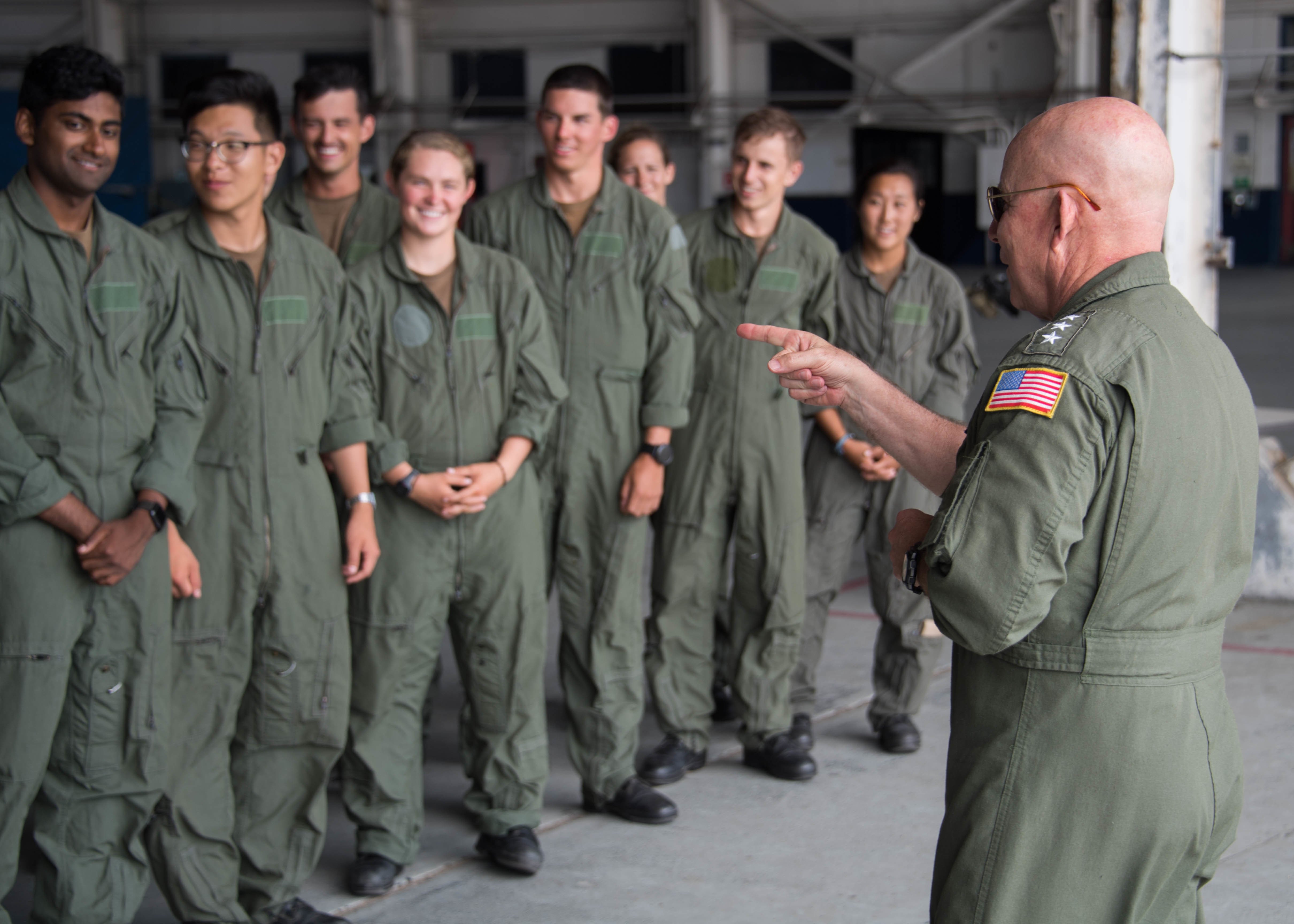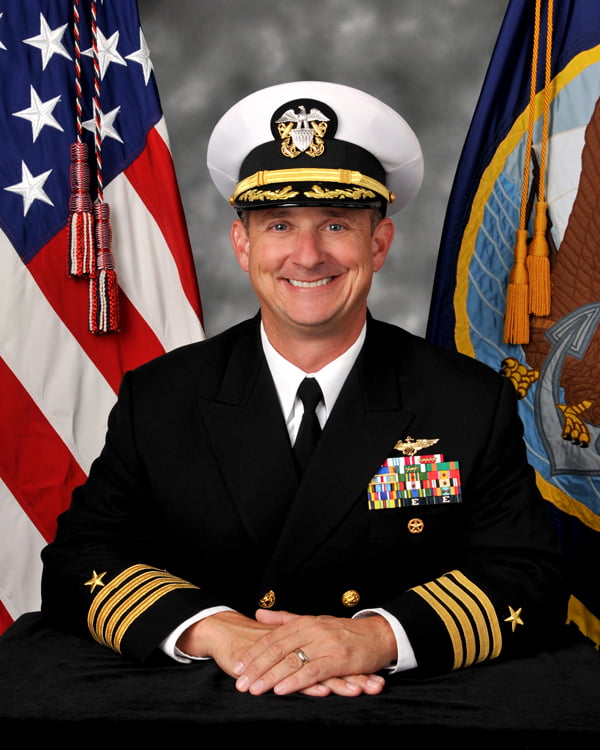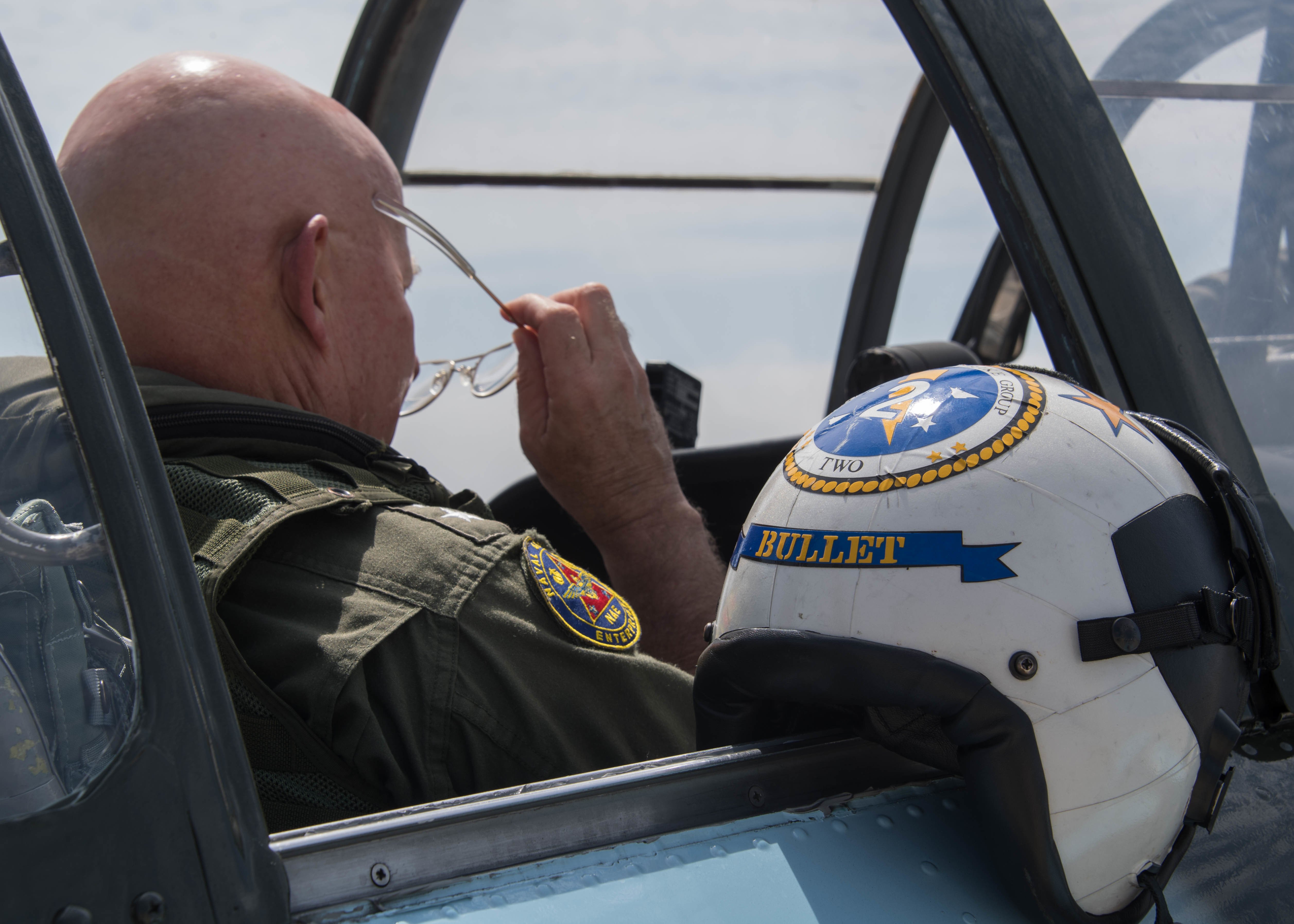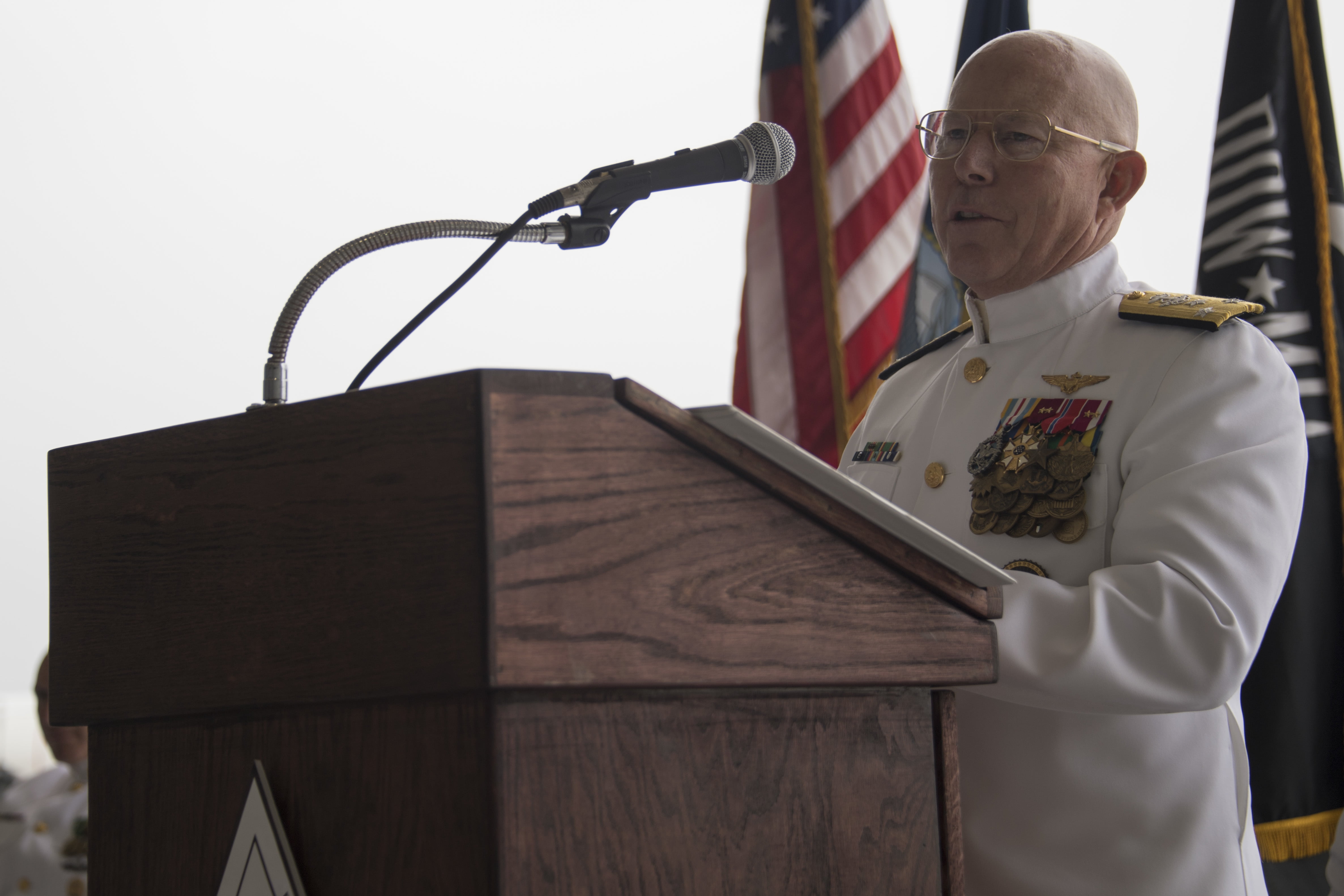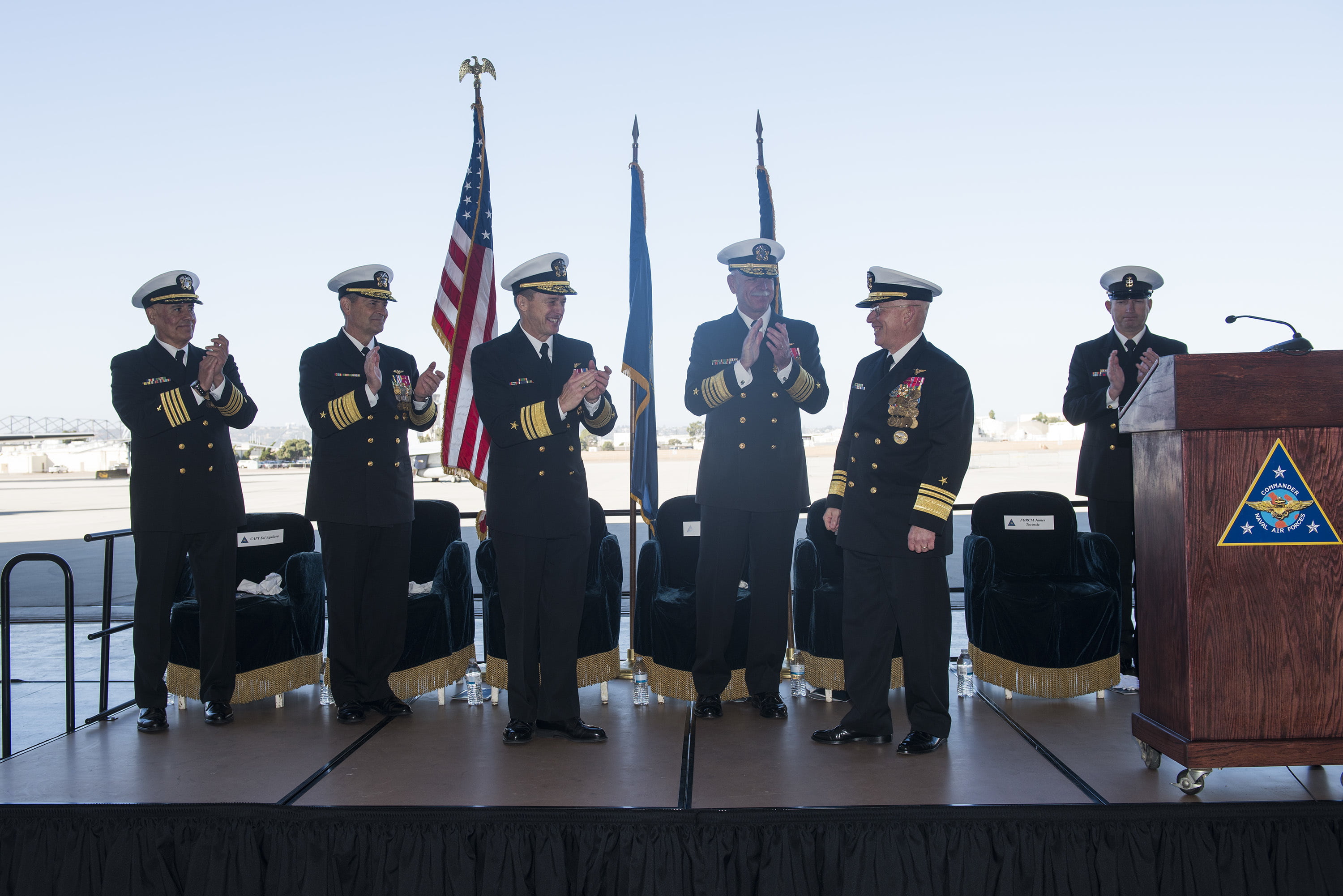By Robbin Laird
To deal with the challenge posed by the 21st century authoritarian powers, the United States military and its allies are rebuilding their combat approach.
The strategic trajectory is to shape a force which can prevail in an area of interest with a coordinated or integrated dispersed or distributed force.
A recently completed exercise, Operation Rapid Forge, is a step in this direction.
Here the focus was upon how to generate sufficient force to defend the Baltic States in a crisis, and to do so by inserting a force which had reach back to a broader and more powerful integrated force.
At the conclusion of the exercise, Airman 1st Class Kyle Cope, 52nd Fighter Wing Public Affairs, provided an overview on the exercise in an article published July 28, 2019.
The 10-day operation helped ensure U.S. forces’ ability to fulfill the European Deterrence Initiative, a policy to assure and defend NATO allies, while promoting deterrence in an increasingly complex security environment.
Members of the 4th Fighter Wing, Seymour Johnson Air Force Base, North Carolina, set up a mobile command and control facility in a simulated austere environment. The 4th FW and the 421st Expeditionary Fighter Squadron, Hill AFB, Utah, used the C2 node throughout the operation for sorties as the U.S. forces practiced interoperability with NATO partners.
“Rapid Forge is assuring our NATO partners,” said U.S. Air Force Col. Donn Yates, 4th FW commander. “Rapid Forge is developing interoperability between 4th and 5th generation aircraft, F-35A (Lightning II) and F-15E (Strike Eagle) and it is also rapidly projecting airpower into the theater using amazing capabilities that we have and then being able to test and experiment with command and control, in accordance with a flexible mindset.”
The operation was a collaborative effort between European and U.S. Forces.
“European forces from NATO member nations of Estonia, Latvia, Lithuania and Poland participated alongside Airmen from U.S. Air Forces in Europe, F-15E Strike Eagles from the 4th FW and F-35A Lightning II from the 421st EFS,” said U.S. Air Force Lt. Col. Maxwell Cover, 421st EFS F-35A pilot.
A key part of Operation Rapid Forge was testing the U.S. Air Force’s ability to operate in an austere environment.
“The U.S. Air Force had been looking to explore its ability to deploy a light and lean force to rapidly stand up a C2 facility anywhere in the world,” Yates said. “This ability prevents U.S. forces from being restricted to a fixed site, while demonstrating we are a credible and capable competitor with any adversary.”
Operating this way has resulted in the concept of the multifunctional Airman, an Airman who is trained to perform a variety of tasks, not just those within their specific specialty.
Cover said the 421st EFS had a team of highly trained maintenance personnel at each training location for Operation Rapid Forge. Airmen were cross-trained into all the different F-35A maintenance functional areas. Instead of having seven to nine personnel to operate all the functional areas, two personnel can do all the F-35A servicing.
The 4th FW also discovered the concept of the multifunctional Airman to be beneficial.
Yates said his base built their team towards the multifunctional Airman concept prior deploying to Operation Rapid Forge. He said for his team, the concept involved training Airmen to fuel jets, marshal aircraft, provide security and lead troops, among other skills.
This concept makes expeditionary operations like Rapid Forge possible.
“The multifunctional Airman concept is key to operating in an austere environment,” Cover said. “We want to minimize our footprint and change the calculus of where a potential adversary thinks we can operate. To do that, we are going to need to cut down the number of people we need to accomplish the mission and have more of a middleweight fighting force that is highly capable.”
The continued change in strategy and policy during Operation Rapid Forge was intended to strengthen the deterrence effect of U.S. forces.
Cover said it is important the U.S. Air Force maintains a strategy that seeks a continuing advantage to deter aggression and assure NATO allies. Operation Rapid Forge was built upon a strategy that allows the U.S. to promote deterrence of possible aggressors by operating in remote locations with a minimal footprint, while still maintaining the strength of our fighting force.
The lessons and skills learned from Operation Rapid Forge resulted in a successful operation.
“We came here to accomplish three objectives,” Yates said. “Get the team here in a very quick timeline, establish our air expeditionary wing and achieve training, and get everyone home safe. We have accomplished the first two objectives and are working on the third, so I consider Rapid Forge to be a huge success.”
This sentence “Operation Rapid Forge was built upon a strategy that allows the U.S. to promote deterrence of possible aggressors by operating in remote locations with a minimal footprint, while still maintaining the strength of our fighting force” highlights the heart of a strategy for the operation of an integrated distributed force.
To do so requires, an operational base, however temporary, to generate combat operations.
To operate, you need fuel and weapons which means that you need to operate dispersed FARPs or forward arming and refueling points which are viable enough to do the job. Which almost certainly means having capabilities to be defended even if mobile or temporary.
Earlier this year, the USAF exercised its FARP capabilities in Arizona. According to an article by Airman 1st Class Kristine Legate, 355th Wing Public Affairs in an article published on February 19, 2019:
DAVIS-MONTHAN AIR FORCE BASE, Ariz.(AFNS) — In the darkness of night, forward area refueling point team members wait for a HC-130J Combat King II to land – marking the start of training.
FARP, a specialty within the petroleum, oils and lubrication career field, trains Airmen to effectively refuel aircraft in remote locations when air-to-air refueling is not possible or when fueling stations are not accessible.
Davis-Monthan is one of seven bases which can provide FARP capabilities. Of the entire U.S. Air Force, there are a total of 63 qualified FARP team members – nine for each base.
“We come in with everything we need to deliver fuel from one aircraft to another,” said Staff Sgt. Drake Burch, 355th Logistics Readiness Squadron FARP operator. “So that others have enough fuel to complete their missions and make it back home safe.”
FARP plays a role in the U.S. military’s adaptive basing abilities to deliver airpower lethality more effectively and efficiently anywhere in the world by being able to provide a mobile refueling point anywhere an aircraft can land.
“With the ability to set up a refueling site with both minimal equipment and personnel, we are able to provide versatility while leaving a low footprint” Burch said.
To maintain readiness in adverse conditions, FARP training can take place anytime, day or night, and consists of members wearing roughly 60 pounds of gear, to include: a rifle, vest, magazines, night-vision goggles, a helmet and survival gear, while performing refueling tasks to simulate encounters they may face downrange.
“We practice how we play,” said Staff Sgt. Matthew Lara, 355th LRS FARP operator. “It helps us prepare for real-world situations. Downrange we could have scenarios where we have to land, refuel and leave in under an hour.”
Training can be strenuous and demanding. To even qualify for FARP, Airmen must pass Survival, Evasion, Resistance, and Escape (SERE) school and go through an altitude chamber. In training situations, which can sometimes take place in pitch black darkness, FARP members must show they can refuel aircraft even in the most austere environments. Training in less-than-ideal conditions allow Airmen to hone their skills which will, in turn, allow them to support the mission in any situation.
“It’s demanding – both physically and mentally. On the job, exhaustion can easily creep up on you and thoughts of wanting to quit start to cross your mind, but you don’t quit,” Lara said. “In a real-world situation you can’t just stop, you have to keep going to complete the mission.”
The force needs a common operating picture and a C2 system which provide a backbone for the combat mass necessary to achieve combat success. The distributed force package however small needs to be well integrated but not just in terms of itself but its ability to operate via C2 or ISR connectors to an enhanced capability.
But that enhanced capability needs to be deployed in order to be tailorable to the distributed operational force operating almost like a lego block and to provide enhanced lethality and effectiveness appropriate to the political action needed to be taken.
This rests really on a significant rework of C2 in order for a distributed force to have the flexibility to operate not just within a limited geographical area but to expand its ability to operate by reaching beyond the geographical boundaries of what the organic presence force is capable of doing by itself.
This requires multi-domain SA – this is not about the intelligence community running its precious space- based assets and hoarding material. This is about looking for the coming confrontation which could trigger a crisis and the SA capabilities airborne, at sea and on the ground would provide the most usable SA monitoring. This is not “actionable intelligence.” This is about shaping force domain knowledge about anticipation of events.
For an integrated distributed force able to operate over an extended period of time, a key challenge will be to build a sustainment capability to enable an integrated distributed force.
If one took the kind of capability exercised in Operation Rapid Forge as a foundational one to deal with the peer competitors, how would you sustain such an approach over a period of time necessary to prevail?
It is clear that to do so would require effective, integrated and globally integratable support structures. And this requirement runs straight into the legacy system which the US has used for force support for the entire post-Cold War period.
Or put another way, without significant legal and security changes in the sustainment system for US forces, effective global performance for an integrated distributed force will simply not be sustainable for an extended period of combat.
This means that rather than looking at logistics as the tail for global power projection, sustainment for an integrated distributed force is the tail wagging the dog.
This means that the core new programs the U.S. is fielding, notably the F-35 and the P-8, to mention two, need to leverage their global presence and allies who are in the program to have sustainable and protected supply and repair centers close to the area of interest from which the allies and the U.S. can work interchangeably.
I have argued that in the case of the US and Australia one could stand up over the next five years a sustained engagement strategy. As Australia looks to enhance its own sustainment capabilities and to expand the use of its Northern geography, and the US looks to reshape its deterrence in depth capabilities with allies in the Pacific, reshaping the logistics support approach could be a key building block for crafting an integrated distributed force in the Pacific.
As I argued in an earlier article:
As the Aussies work out their sustainment approach on the various airbases where the F-35s will operate in normal times as well as crisis times, the F-35 partners of Australia have a significant strategic opportunity — namely, to learn how to do sustained engagement operations working with the RAAF in supporting regional deterrence operations.
The Aussies are standing up a significant support structure in Australia for regional support. As they do so, allies such as the US and Japan can shape an approach to what I would call sustained engagement.
With crises to come in which the F-35s will play a key role, the Australians can provide operating locations for allies, without having to base those allies on a long term basis. This allows Australia its sovereignty but also allows allies like the United States and Japan to gain operational depth, which will be crucial for deterrence in the region.
Because they are flying virtually the same aircraft, stockpiling parts and leveraging an expanded sustainment base with the Australian maintainers leading the way for the USAF to move to a new approach to operations which does not require them to operate like Fed Ex flying in resources to then stand up support in a crisis.
The USAF or the Japanese could fly to Australia and be supported by Australian based supplies and maintainers supplemented by Japanese and US maintainers and could operate rapidly in a crisis, rather than engaging in a significant airlift and tanking support set of missions to stand up aircraft in Australia on a case by case basis.
It is not about just showing up; it is about being able to do sustained engagement with a very light expeditionary support structure to establish and operate from a solid operational footprint.
Lt. Col. David Beaumont, an Australian logistics officer and expert, provided his perspective on how he saw this aspect of the potential for the F-35 program.
“This is the beauty of the program – it supports what we might also call ‘theatre setting’, or creating logistics (sustainment) and other arrangement s we could conceivably operate in.
“In coalition, we’ll effectively be operating a strategic ‘hub and spoke’ support network for the aircraft where a range of coalition bases (countries) offer hubs for operations, with supply chains between them the spokes. The other advantage is considerable redundancy if the supply chains are interdicted in one area.
This inherent capability within the F-35 global enterprise “makes interoperability among allies a fundamental issue for immediate attention.”
For the sea services, this means as well bolstering and reshaping its capabilities for at sea support as well.
Notably, in the new USMC Commandant’s guidance, he highlighted how he saw the USN-USMC team reworking its capabilities to provide combat blocs within what I am calling an integrated distributed force. He highlighted the importance of distributed combat blocs or perhaps small task forces to operate against adversary positions within an area of interest and to do so for sustained periods of time.
While there has been much discussion of the capital fleet and of the weaponization of that fleet, what is missing is a clear commitment and investment in the logistics support fleet that can make any of this happen. In fact, the littoral combat ship was bought with scant regard to the Military Sealift Command and its inability to support a forward deployed LCS and as a result, LCSs are now being attached to task forces.
This means that the slow, steady and perhaps irreversible decline of U.S. and allied merchant marines will make support to an integrated distributed fleet very difficult indeed. Not only do we need merchant mariners but a significant upsurge in the supply ships necessary to tank, arm and generally support the fleet, and if distributed this demand signal goes up significantly,
This is not simply a U.S. problem but an allied problem as well.
Innovations are clearly underway that will allow the supply challenge for a distributed force to be improved. An ability to do 3D printing for parts onboard ships is one example. Directed energy weapons supplementing or supplanting today’s kinetic weapons is another.
An ability to leverage remote basing as well as new forms of supply via unmanned vessels can provide new tool sets as well.
But the point can be put bluntly – the tail is going to wag the dog on this one.
Without a significant commitment to sourcing, reworking, and investing in new approaches and strategies for the US to work with allies for distributed support, the promise inherent in a shift to an integrated distributed force will not be met.
The original version of this article was published in Front Line Defence, Issue 3, 2019.
The article is entitled: “An Integrated Distributed Force” and starts on page 18 in the magazine.
Coda: The Basing Challenge
Under the latest National Defense Strategy, the Air Force is questioning the resiliency of its established bases and putting thought into how the service could establish a makeshift airfield or use partner nations’ bases to distribute assets should war break out.
“It is about combat-credible forward forces; that is, forces that are or can rapidly get forward, survive a withering Chinese or Russian assault, and blunt the adversary’s aggression,” Elbridge Colby, who co-led development of the National Defense Strategy, wrote in January 2019 testimony to Congress. “And it is about bases, operating locations and logistic networks that can perform their missions in support of these goals, even under heavy and sustained enemy attacks.”
Simply put, the Air Force can’t count on its installations to withstand the type of prolonged attacks that Russia and China could mount, and the service must be able to swiftly regenerate air power from alternate sites should its primary bases became unusable.
That problem was on the mind of Air Force Chief of Staff Gen. Dave Goldfein during a July trip to Finland.
The Finnish Air Force disperses its aircraft among four bases inside the country, but all its aircraft can operate from Finland’s many “road bases”— basically a highway strip that is equipped to function as a runway. The service trains its personnel to secure and stand up road bases, and it regularly demonstrates its ability to operate from the bases during exercises.
The U.S. Air Force could learn from that, Goldfein told Defense News after the visit.
“While we do have a lot of bases, I don’t know which of those are going to be available for the time I need it,” he said.
“So I’ve got to be more agile than that, and it might be that I’m setting up a base that doesn’t actually exist. I have a long enough track of concrete, some source of water, and that’s all I’ve got, and now I have to rapidly stand it up and do all those key tasks,” he added. “Stand up a base, defend the base, receive forces, be able to connect into the command and control, and then be able to operate in a contested environment. They’re already thinking about that.”
One means of doing this involves pre-positioning equipment in Europe, as well as making key investments to partner nations’ bases to fund things like runway repairs and new hangars. Last year, the U.S. Air Force conducted a proof of concept for “deployable air bases,” demonstrating that airmen could transfer shipping containers full of equipment to Poland’s 31st Air Base in Krzesiny and set up a camp and airfield infrastructure needed to launch planes.
https://www.defensenews.com/smr/a-modern-nato/2019/08/28/denied-hot-meals-and-indoor-toilets-us-airmen-prepare-for-the-fog-of-war/




